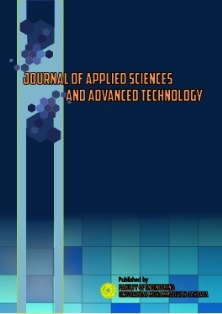Simulation of Efficiency in Improving the Performance of Cylindrical Vertical Furnace Using Indirect Method
DOI:
https://doi.org/10.24853/jasat.5.1.7-12Keywords:
Efficiency Furnace indirect methodAbstract
One of the essential pieces of equipment at the Pertamina Refinery Unit V Balikpapan is the Furnace F-3-04 Vertical Cylindrical type. Furnace operation efficiently becomes very important given the vast energy consumption and directly influences the level of refinery profits. Therefore, it is necessary to do a simulation to increase the efficiency value to minimize energy use. This study aimed to determine the effect of O2 Excess and Flue Gas temperature on efficiency and to find the best efficiency from the simulation results on a Vertical Cylindrical Furnace. In this study, the furnace's efficiency is calculated and simulated using the indirect method. The heat entering the furnace is reduced by the heat lost compared to the heat entering. Initial data processing is a normality test to determine whether the data is usually distributed and can be used for data to be entered into the mathematical simulation of furnace efficiency. The efficiency value produced by Furnace F-3-04 is 86.3%, with an O2 excess value of 7.25% and a Flue Gas temperature of 419 0C. From the simulation carried out, it can be seen that the operating parameter that most affects efficiency is O2 Excess of 0.15 – 0.18% for every 0.5% decrease in O2 Excess for 5 simulations. Meanwhile, the Flue Gas temperature gets a value of 0.02 – 0.03% for every 2 0C decrease for 5 simulations. The best efficiency value is 87.7%, with O2 Excess of 4.75% and Flue Gas temperature of 409 0C.Downloads
References
Abbi Y. P., Shashank Jain, 2009, Handbook on Energy Audit and Environment Management, The Energy and Resources Institute.
Supandrio, Heru et. al, 2010, BFO Workbook, Pertamina Refining Directorate, Jakarta.
Supandrio, Heru et. Al, 2013, EMS Brick Overview, Pertamina Refining Directorate, Jakarta.
Worrell, Ernst and Galitsky, Christina, 2005, Energy Efficiency Improvement and Cost Saving Opportunities for Petroleum Refineries, Lawrence Berkeley National Laboratory report LBNL-56183. Berkeley, CA
Hasanuzzaman, M., R. Saidur and N.A. Rahim, 2011, Energy, Exergy and Economic Analysis of an Anealing Furnace, International Journal of The Physical Sciences, Vil. 6(6), pp. 1257-1266
GPSA, 2004, Engineering Databook FPS Sreies, 21th Edition, Gas Processor Supplier Association, Tulsa
Baukal, Charles E. JR, 2003, The Jhon Zink Combustion Handbook, CRC Press, Tulsa
Garg, Ashutosh, 2010, New Approach to Optimizing Fired Heaters, Proceedings Thirty-second Industrial Energy Technology Conference, New Orleans, LA, May 19-22
K.R Kohlhase, 1987, Combustion Guide, BP Oil International
Carpenter, Kevin, and Kissock, Kelly, 2005, Quantifying Savings From Improved Boiler Operation, Proceedings of The Twenty-Seventh Industrial Energy Technology Conference, New Orleans
Carpenter, Kevin and Chris Schmidt, 2008, Common Boiler Excess Air Trends and Strategies to Optimize Efficiency, ACEEE Summer Study on Energy Efficiency in Buildings
Punte, Sophie, et. al, 2006, Pedoman Efisiensi Energi untuk Industri di Asia, Terjemana dari United Nation Environment Protection (UNEP) Journal, BPPT, Jakarta.
Verma, VS et. al, 2005, Energy Perfomance Assessment for Equipment and Utility Systems, India Bureau of Energy Efficiency, New Delhi, India.
Roffe B. and J. E. Rijnsdorp, 1974, Dynamics And Control Of A Gas-Fired Furnace, Chemical Engineering Science, 1974, Vol. 29, Pp. 2083-2092. Pergamon Press. Printed In Great Britain
Abdillah, Aji dan Budiman, Arif, 2020. Perhitungan Efisiensi Mesin Boiler Jenis Fire Tube Menggunakan Metode Direct dan Indirect Untuk Produk Butiran – Butiran Pelet. Universitas Gunadarma, Jakarta.
Setiabudi, Rifki, 2017. Analisa Efisiensi Water Tube Boiler Menggunakan Indirect Method. Departemen Teknik Mesin, Sekolah Vokasi, Universitas Gajahmada, Yogyakarta.
Sinaga, Nazaruddin, 2010. Energy Efficiency on Boiler Systems, Efficiency and Energy Conservation Laboratory, Diponegoro University, Semarang.
Harijono Mulud dan Wahyono, 2015. Pengaruh Excess Air Terhadap Flue Gas di PLTU Tanjung Jati B Unit 2. Jurnal Teknik Energi Vol. 11 No. 3 Hal. 78-84, Polnes – Semarang.
Downloads
Published
Issue
Section
License
COPYRIGHT POLICY
The author(s) of an article published in the Journal of Applied Sciences and Advanced Technology (JASAT) retains ownership of the intellectual property rights in work (s).
PUBLISHING RIGHTS
The author(s) of an article published in the Journal of Applied Sciences and Advanced Technology (JASAT) have unrestricted publication rights. The authors give the Journal of Applied Sciences and Advanced Technology (JASAT) the right to publish the article and designate the Faculty of Engineering Universitas Muhammadiyah Jakarta Publishing as the original publisher of the article.
LICENSING POLICY
JASAT is an open-access journal that follows the Creative Commons Non-Commercial 4.0 International License (CC BY-NC 4.0), which states that:

Under this license, the reusers must give appropriate credit, provide a link to the license, and indicate if changes were made. Users may do so in any reasonable manner, but not in any way that suggests the licensor endorses users or their use.
Please take the time to read the whole license agreement (https://creativecommons.org/licenses/by-nc/4.0/). As long as reusers follow the license conditions, the owner cannot withdraw these freedoms. The following components are included under this license:
 Attribution: Users must provide appropriate attribution, including a link to the license, and indicate whether or not they made any modifications. Users are free to do so reasonably, but not in a manner that indicates the licensee approves of their usage.
Attribution: Users must provide appropriate attribution, including a link to the license, and indicate whether or not they made any modifications. Users are free to do so reasonably, but not in a manner that indicates the licensee approves of their usage.
 NonCommercial: Users may not use the material for commercial purposes.
NonCommercial: Users may not use the material for commercial purposes.












_2.png)


1.png)

2.png)
